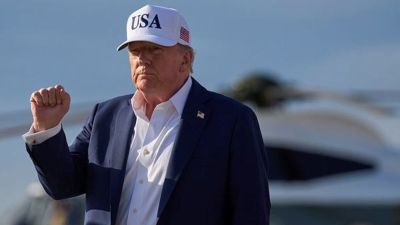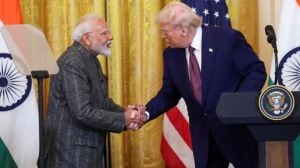A bus of hope: How a Punjab govt school near border with Pak set an example for the state
Enrolment is up 38% since free bus travel was rolled out for students at a govt school in Fazilka; such is the success that students from the city are opting to travel to a village to study
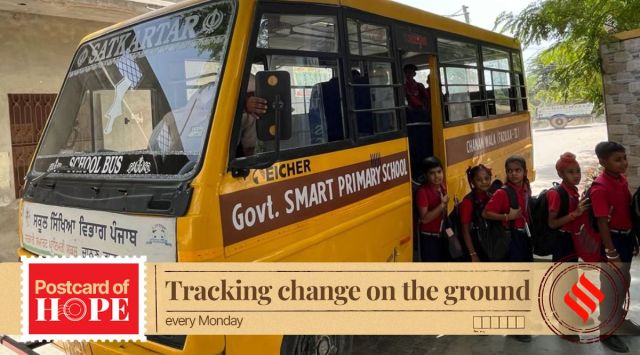 Children alighting from the bus, a free of cost transportation service, at government primary school, Chanan Wala in Fazilka. (Express Photo)
Children alighting from the bus, a free of cost transportation service, at government primary school, Chanan Wala in Fazilka. (Express Photo) Seven-year old Agam loves to sit near the window in his school bus, but he knows well not to take his head or hands out. “There can be an accident. The bus monitor has told us to behave like good children while travelling,” says Agam, who is in class 3.
It’s 7.15 am as Agam says goodbye to his mother, Monika Rani (39), before setting off for the school – 10 km away from his home in Shakti Nagar in Punjab’s Fazilka city. The destination is the village of Chanan Wala, just 2 km from the India-Pakistan border.
With a mobile app called ‘Class On’, Monika gets busy tracking the bus route. “Since we can always track the vehicle on this app and even call the driver if required, I never felt it was unsafe to send my son to a school in a village near the border. It offers way better facilities than private ones,” she says.
The yellow bus finally stops inside the school gate around 7.55 am, and the “bus monitor” does a head count before letting children head to their classrooms.
As the children, dressed in bright red uniforms, alight, five more buses – each with fans and fire safety equipment – enter the campus, with Govt Smart Primary School, Chanan Wala (Fazilka-II) prominently written on each vehicle.

Till three years ago, Agam was a nursery student at a private school in Fazilka, where his parents paid Rs 700 a month tuition fee and had to drop and pick him up on their two-wheeler.
As a pilot project in 2021-22, the then Congress government in Punjab started a free transport service in two government primary schools – in Fazilka and Fatehgarh Sahib. It was given a nod by the then school education secretary Krishan Kumar, and such has been the success that the current AAP government has decided to expand it to more than 100 schools across the state – including 117 Schools of Eminence, and 15-20 schools that have a significant number of girl students.
A clear trend
At the school in Chanan Wala, the numbers paint a clear picture of how free travel can incentivise parents to opt for government schools over substandard private ones. Between the academic sessions in 2021-22 and 2023-24, the number of students enrolled at this school went from 336 to 463, a 38% jump. Even more telling is another statistic – the number of children availing the free bus service went from 164 to 310, an 89% jump.
Significantly, children not just from villages but from Fazilka city are now travelling all the way to the border village to study here.
But even before the state education department greenlit the project, head teacher Lavjeet Singh Grewal had started bus service for children in 2019-20 itself, charging parents a nominal fee. The move to make it free, though, proved a gamechanger.
 Punjab Chief Minister Bhagwant Mann had also announced that the service will be provided in girls schools first keeping their safety in mind. (Express Photo)
Punjab Chief Minister Bhagwant Mann had also announced that the service will be provided in girls schools first keeping their safety in mind. (Express Photo)
Agam is one of 125 children from Fazilka city who now attend this school, travelling roughly 10 km to and fro. Such was the response that the fleet of buses had to be increased from one to six, covering 11 villages and three city routes.
Grewal says the education department chose schools that had facilities “even better than private schools”, to assess if parents would send their children a little far if provided free transport. “All classrooms have air-conditioners. We have smart classrooms fitted with modern learning aids and projectors, and there’s a dining hall to serve midday meals,” he says.
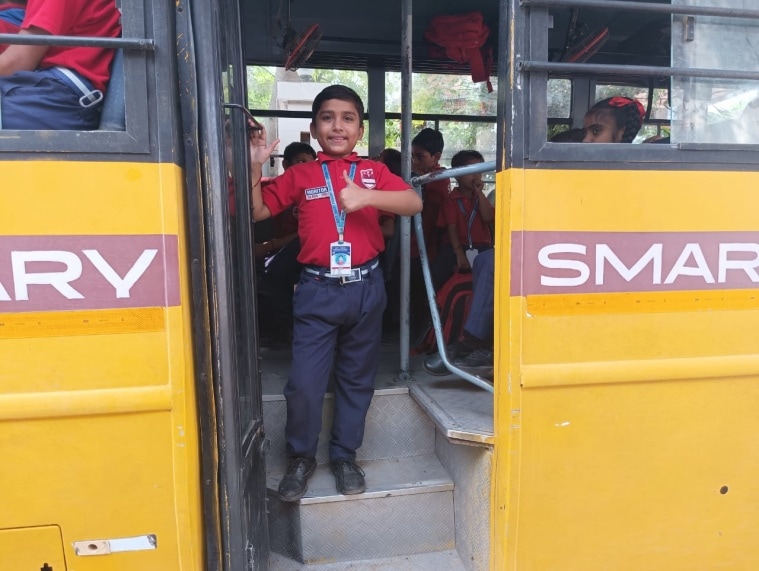 Agam, a class 3 kid, who travels from city to village. (Express Photo)
Agam, a class 3 kid, who travels from city to village. (Express Photo)
“We tied up with a private contractor in 2019-20 and started with just one bus on our own as transportation was an issue in the border area. In 2020, schools remained closed due to the pandemic for more than a year. Afterwards, the government sanctioned Rs 1,000 per child per month for the service and converted it into a pilot project. Now, 310 children come to school in six buses,” he says. “We also have a tie-up with a private app through which parents can check bus routes, track the vehicle, check homework, time-table, etc on their phones.”
Small intervention, big success
Vicky, a farmer from Suresh Wala village, recalls sending his daughter to a private school and paying Rs 500 a month for an autorickshaw. “Now the bus picks and drops her at the doorstep,” he says.
Rajinder Singh from Churiwala Chisti village says he would pay Rs 300 a month to ferry his son to a private school, or sometimes drop and pick him up on a motorcycle. “Now we are tension free,” he says.
Sham Lal, a dairy owner from Nawi Abaadi in Fazilka city and a father of twin daughters Niharika and Nitika, both in class 4, says he would pay Rs 400 per month tuition fee for each child, and ferry them on his own. “Though the private school was nearby, it did not have the facilities that are available here. They travel 12-13 km now, but we have no issue as this school is considerably better. They organise parent-teacher meetings more often than the private school did,” he says.
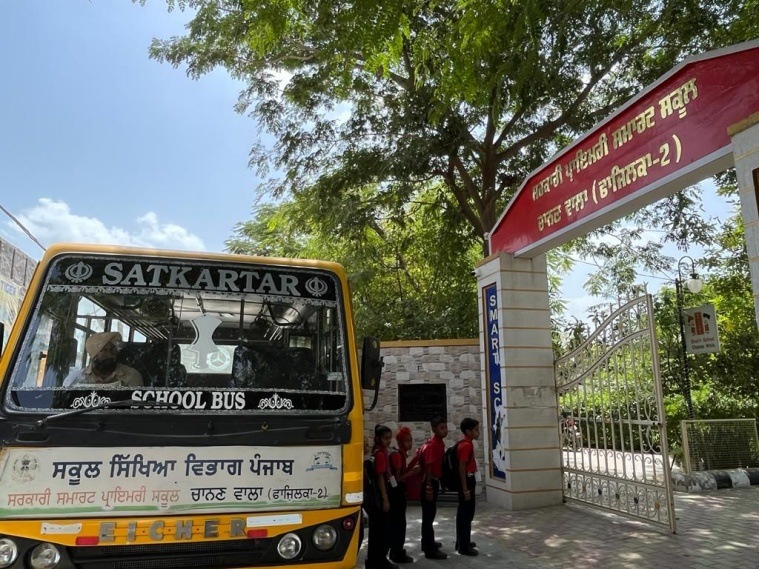 As per an education department order dated August 25, the government will pay these schools Rs 1,000 per student, while Rs 200 will be paid by the parents. (Express Photo)
As per an education department order dated August 25, the government will pay these schools Rs 1,000 per student, while Rs 200 will be paid by the parents. (Express Photo)
At the other school chosen for the pilot project, Government Primary School in Manela village of Fatehgarh Sahib district, enrolment has gone from 93 to 154. Almost a third of those currently enrolled avail the free bus service. “Of the 45 using it, 13 come from Khamano town. We have one bus running as of now,” says Jagtar Singh, a teacher at the ‘smart’ school.
According to a senior official, Kumar, the former secretary, education rolled out the pilot project to help children in faraway villages reach school after the pandemic. “The success of the Fazilka school project has also been due to Grewal’s efforts who, despite his school being in a border village, made it one of the best in the state and then successfully implemented free bus service too, showing other teachers how nothing is impossible,” says the official.
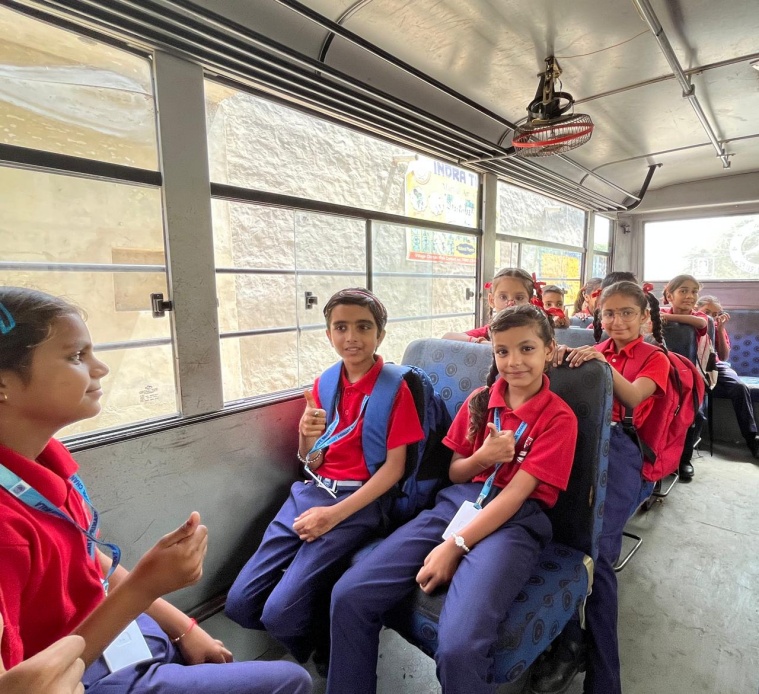 Kids in the bus at Fazilka border school. (Express Photo)
Kids in the bus at Fazilka border school. (Express Photo)
Sanjeev Sharma, the state’s director of secondary education, says “the project will be expanded to all 117 Schools of Eminence set up by the AAP government and 15-20 senior secondary schools for girls for their safety”.
Punjab Chief Minister Bhagwant Mann had also announced that the service will be provided in girls schools first keeping their safety in mind.
As per an education department order dated August 25, the government will pay these schools Rs 1,000 per student, while Rs 200 will be paid by the parents. It is aimed at children whose homes are at least 3 km from the school.
Punjab has 19,110 government schools, of which only the ones in Fazilka and Manela provide free transport. In Delhi, where the AAP government is in power, government schools do not provide bus service. The rationale is that in the national capital, schools are usually within a 5 km vicinity of a child’s home.
In the Punjab education department order, the success of the two schools finds a mention: “It is not possible for all children to access schools by their own means of transport. Public transport such as government buses also ply on main roads only. There are several villages in Punjab which are not connected by public transport. In such situations, parents do not send their children to faraway schools, especially girls, and subsequently girls are deprived of education… In previous years, the pilot project to provide free transport in two schools – with a grant of Rs 1,000 per child – led to a great increase in enrollment.”



